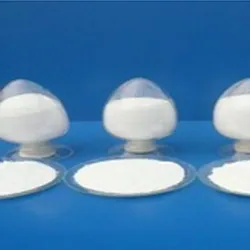
Benefits of Using 70 Percent Isopropyl Alcohol for Disinfection and Cleaning Tasks
The Importance of Isopropyl Alcohol at 70% Concentration
Isopropyl alcohol, commonly known as isopropanol or rubbing alcohol, is a versatile chemical compound that has garnered immense popularity in various industrial and domestic applications. Among its many concentrations, the 70% formulation of isopropyl alcohol is particularly noteworthy for its effectiveness as a disinfectant and solvent. Understanding the properties, uses, and safety measures associated with 70% isopropyl alcohol can significantly enhance its value in daily life, especially in the context of public health.
What is 70% Isopropyl Alcohol?
Isopropyl alcohol is an organic compound with the chemical formula C3H8O. When we refer to 70% isopropyl alcohol, we are indicating that the solution is composed of 70% isopropanol and 30% water. The presence of water is crucial; it is a key factor that enhances the alcohol’s disinfecting capabilities. The optimal concentration of isopropyl alcohol for effective antimicrobial activity is around 60% to 90%, with 70% being the most widely recommended concentration for disinfection.
Why 70% Works Best
The effectiveness of 70% isopropyl alcohol lies in its ability to penetrate cell membranes of bacteria and viruses. When the alcohol concentration is too high (greater than 90%), it can quickly coagulate the proteins on the cell surface, forming a protective barrier that prevents further penetration. In contrast, the addition of water helps to slow down the evaporation rate, allowing the alcohol to remain in contact with microbial cell membranes for a sufficient period to effectively eradicate pathogens.
This makes 70% isopropyl alcohol an excellent choice for disinfecting surfaces, medical instruments, and even skin. It is effective against a wide variety of microorganisms, including bacteria, fungi, and many viruses, making it an essential item in both healthcare settings and at home.
Applications in Daily Life
isopropyl alcohol 70 percent

The applications of 70% isopropyl alcohol are diverse. In healthcare, it is routinely used to disinfect surfaces in hospitals, clinics, and laboratories. Medical professionals often use it to clean their hands or skin before procedures. In the household, isopropyl alcohol can be used to sanitize countertops, doorknobs, and other frequently touched surfaces, especially during flu season or in the event of a contagious illness.
In addition to its disinfectant properties, 70% isopropyl alcohol is also used as a solvent in many industrial applications, including in the formulation of pharmaceuticals, cosmetics, and cleaners. It can effectively dissolve a wide range of non-polar compounds, making it invaluable in chemical processing and product development.
Safety and Precautions
While 70% isopropyl alcohol is widely used and generally safe when handled properly, it is essential to follow safety precautions. As a flammable liquid, it should be kept away from open flames and heat sources. Proper ventilation is necessary when using it, as the fumes can be irritating to the respiratory system and eyes.
Moreover, isopropyl alcohol should not be ingested. Ingesting even small amounts can lead to serious health issues, including poisoning. Always store it out of reach of children and pets, and use it in a manner consistent with the instructions provided on the label.
Conclusion
The significance of 70% isopropyl alcohol cannot be overstated, especially in the current era where hygiene and sanitation are paramount. Its efficacy as a disinfectant, combined with its versatility as a solvent, makes it an essential component in various sectors, from healthcare to household cleaning. By understanding how to properly use and handle 70% isopropyl alcohol, we can harness its benefits while ensuring safety and effectiveness in our daily routines. Whether in hospitals, homes, or industries, the value of this simple yet powerful compound remains unrivaled in the quest for cleanliness and health.
-
Buy High-Quality Trichloroisocyanuric Acid for Sale | TCCA 90% SupplierNewsAug.30,2025
-
Pure Sodium Dichloroisocyanurate Dihydrate | Powerful DisinfectantNewsAug.29,2025
-
Industrial Chemicals: Quality & Purity for Every IndustryNewsAug.28,2025
-
Nitrile Rubber Honoring Strict Production StandardsNewsAug.22,2025
-
Aspartame Ingredients Honoring Food Safety ValuesNewsAug.22,2025
-
Fertilizer for Balanced Plant NutritionNewsAug.22,2025
-
Cyanide Gold Processing with High Purity AdditivesNewsAug.22,2025
Hebei Tenger Chemical Technology Co., Ltd. focuses on the chemical industry and is committed to the export service of chemical raw materials.
-

view more DiethanolisopropanolamineIn the ever-growing field of chemical solutions, diethanolisopropanolamine (DEIPA) stands out as a versatile and important compound. Due to its unique chemical structure and properties, DEIPA is of interest to various industries including construction, personal care, and agriculture. -

view more TriisopropanolamineTriisopropanolamine (TIPA) alkanol amine substance, is a kind of alcohol amine compound with amino and alcohol hydroxyl, and because of its molecules contains both amino and hydroxyl. -

view more Tetramethyl Thiuram DisulfideTetramethyl thiuram disulfide, also known as TMTD, is a white to light-yellow powder with a distinct sulfur-like odor. It is soluble in organic solvents such as benzene, acetone, and ethyl acetate, making it highly versatile for use in different formulations. TMTD is known for its excellent vulcanization acceleration properties, which makes it a key ingredient in the production of rubber products. Additionally, it acts as an effective fungicide and bactericide, making it valuable in agricultural applications. Its high purity and stability ensure consistent performance, making it a preferred choice for manufacturers across various industries.





